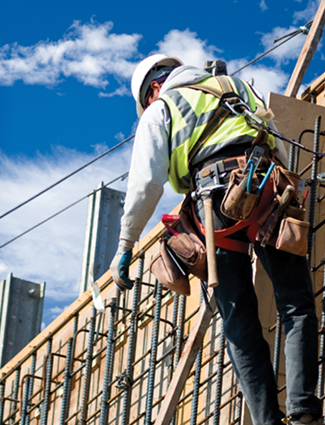Ontario Unveils 2017?s Top 10 Workplace Violations
03
February,
2023
2 MINUTE READ

Acts and threats of physical violence, harassment, and intimidation made for the No. 1 Occupational Health and Safety (OHS) violation in 2017, according to the Ontario Ministry of Labour (MOL). The ministry made public its annual top 10 recently at the Partners in Prevention Conference. Fall protection, with 9,658 violations, came in second, and was mostly the result of inadequate protection in the construction sector.
Faults in Fall Protection
Unintentional falls are the leading cause of hospitalized injuries in Canada, the Canadian Institute for Health Information (CIHI) reports. Falls injure about 40,000 workers each year nationwide, and kill roughly 10 per year in Ontario alone, according to the Canadian Centre for Occupational Health and Safety. In 2016, the construction industry made up 30 percent of all work-related traumatic fatalities and occupational disease fatality, according to data from the Workplace Safety and Insurance Board. Fall protection in the construction remains a top concern.
"It continues to amaze me," said Peter Augruso, the MOL assistant deputy minister, operations division. "Seems kind of common sense and logical, that you go out working at heights and you're going to use fall protection or guardrails."
Besides the construction industry, the mining and general industrial sectors also aren't in compliance with fall protection standards. Those sectors were issued 206 stop-work orders in 2017 by the MOL. Stop-work orders are given when there is an imminent danger to a worker that could result in a tragic incident.
The MOL examines the top 10 violations list when making key financial decisions and inspection campaigns for the following fiscal year. The ministry posts on its website a workplace inspection blitz schedule so that employers can prepare for a potential visit from an inspector.
"We're going to tell you what it is, we're going to tell you the dates of it. Shame on you if we come out there and actually issue orders," Augruso said. "We can't do anything more than hold your hand."
Top 10 OHS violations for 2017
- Workplace violence and harassment (11,662 violations)
- Fall protection (9,658)
- Lack of personal protective equipment (8,318)
- Improper access and egress (6,472)
- Health and safety representative and Joint Health Safety Committee (6,239)
- Administrative (6,007)
- Basic Occupational Health and Safety awareness training (5,232)
- Improper use/maintenance of ladders/scaffolding (4,846)
- Lack of machine/equipment guarding (4,276)
- Housekeeping/work surfaces (4,269)

Proactive Planning
In an effort to find and fix workplace hazards, the Canadian Government and OSHA in the U.S., both create a top 10 violations list annually. To address workplace violence and harassment, Canada is set to require that employers have a harassment awareness plan as part of written health and safety programs. The plan should include prevention and corrective action, ensure training, and provide support for treatment programs, according to the MOL.
To increase the health and safety of workers at any job site or facility, employers can make consistent progress. Employers can examine the top 10 list as a starting point to evaluate potential hazards and perform mitigation. Prevent deaths and workplace accidents by being vigilant, proactive, and aware. When workplace job duties, machines, or worker dynamics change, conduct a job hazard analysis. Train workers using the latest information and best practice resources. Build collaborative partnerships, increase compliance, and promote a workplace culture of safety and health.
RELATED RESOURCES

Top 10 Serious and Willful OSHA Violations
While data is still preliminary, OSHA's Top Ten Citation List for 2015 reveals trends in serious and willful ...
Read
3 Ways to Reinforce Training and Improve Safety
Training employees isn't a one and done type event. Training should be continuous as job tasks and hazards ...
Read
Collaboration Aims to Improve Energy Production Safety
The U.S. Environmental Protection Agency is conducting a series of discussions with other environmental ...
Read.png)


